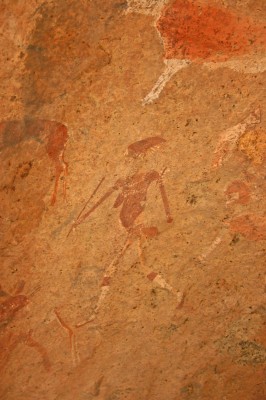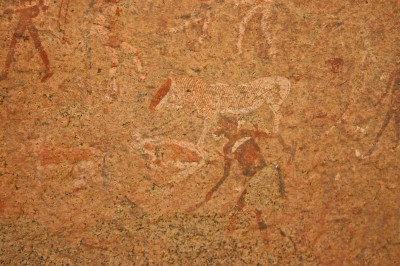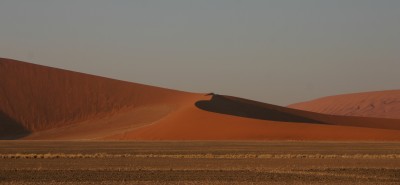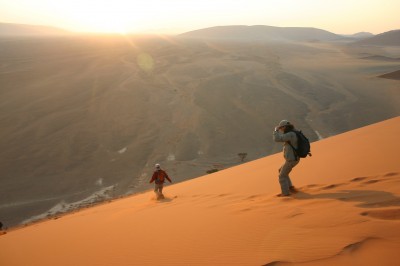The delicate and fine-boned dik-dik is a little cutey pie. It has eyelashes to die for – long, thick and enchanting – a long, mobile, touchy-feely nose and a charming little tuft of hair between its tiny, spiky horns. The hair is erectile and gets a rise in certain social situations (sounds a bit naughty, doesn’t it?). Weighing in at 5 kg it is the smallest of the antelopes.
Much larger (about 200 kg) is the stylish gemsbok (also known as oryx), one of the few large animals we saw until we were bombarded by wildlife viewing in Etosha. The gemsbok is a real cover girl. It has strikingly long and straight, ridged horns, alternating black, white and fawn patterns and a black horsey tail. Despite its sturdy build it has an elegant Coco Chanel-look about it.
The springbok and the black-faced impala have also chosen the fawn, black and white colour scheme. The springbok is the only gazelle in southern Africa and is distinguished by its dashing reddish brown side stripe between its white belly and fawn upper body. It also has a daring black stripe along the side of the face right through the eye. And donkey’s ears – they are so long! The black-faced impala, which is similar to the springbok, not only has a black eye stripe but also a black nose stripe.
With its disarming white upper lip, the greater kudu looks like it has just had a glass of milk. Or perhaps someone took a paintbrush and decorated it with a funny little white moustache, a white stripe connecting the inner corners of the eyes and six to ten fine white stripes on its body. The male has swirly, spiralled horns and a long fringe hanging along its throat.
Nature is my favourite stylist.
















































